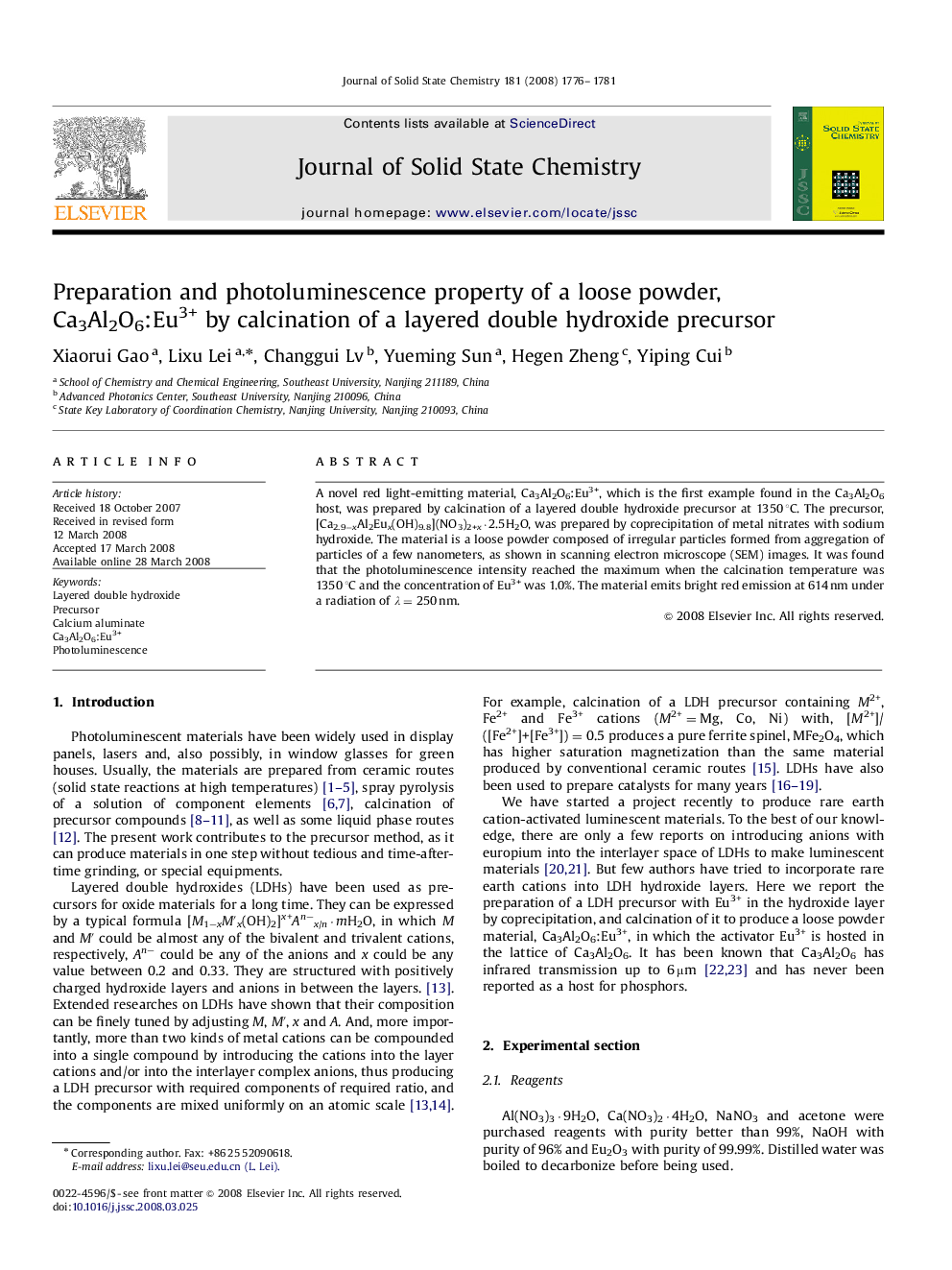| Article ID | Journal | Published Year | Pages | File Type |
|---|---|---|---|---|
| 1332154 | Journal of Solid State Chemistry | 2008 | 6 Pages |
A novel red light-emitting material, Ca3Al2O6:Eu3+, which is the first example found in the Ca3Al2O6 host, was prepared by calcination of a layered double hydroxide precursor at 1350 °C. The precursor, [Ca2.9−xAl2Eux(OH)9.8](NO3)2+x·2.5H2O, was prepared by coprecipitation of metal nitrates with sodium hydroxide. The material is a loose powder composed of irregular particles formed from aggregation of particles of a few nanometers, as shown in scanning electron microscope (SEM) images. It was found that the photoluminescence intensity reached the maximum when the calcination temperature was 1350 °C and the concentration of Eu3+ was 1.0%. The material emits bright red emission at 614 nm under a radiation of λ=250 nm.
Graphical abstractCalcination of a layered double hydroxide precursor produces Ca3Al2O6:Eu3+, which is very easy to be pulverized. It is proposed that Eu3+ takes the place of one Ca2+ (green spheres in the picture, pink pyramids are [AlO4] tetrahedrons) in the cell of Ca3Al2O6. The Ca2+ could be any one of the bigger green spheres without inversion symmetry, and emits red light under a UV radiation of λ=250 nm.Figure optionsDownload full-size imageDownload as PowerPoint slide
